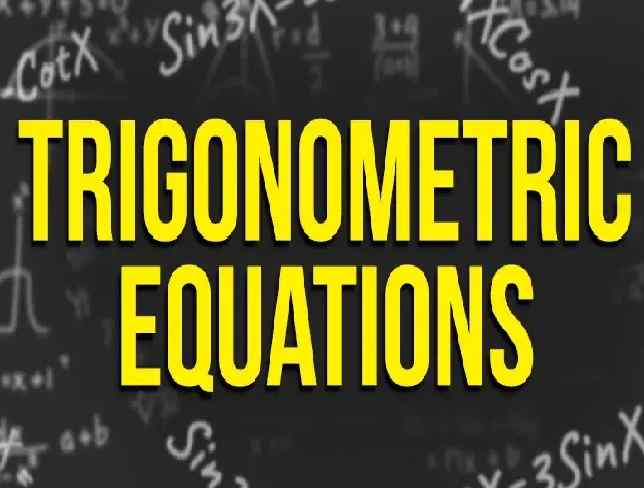Waste Generation and Management Goyal Brother ICSE Class-9 Ch-18. We Provide Solutions of Exercise-18 Waste Generation and Management Goyal Brother Prakashan ICSE Class-9 Ch-18. All Type exercise question such as name the following, difference between, MCQs, Answer the question. Visit official Website CISCE for detail information about ICSE Board Class-9.
ICSE Class-9 Ch-18 Waste Generation and Management Goyal Brother Solutions
| Board | ICSE |
| Publications | Goyal Brother Prakashan |
| Subject | Biology |
| Class | 9th |
| Writer | Dr. S.K. Aggarwal |
| Chapter-18 | Waste Generation and Management |
| Topics | Solutions of Exercises-18 |
| Edition | for 2022-2023 Academic Session |
Ch-18 Waste Generation and Management
Goyal Brother Prakashan ICSE Class-9 Biology Solutions
(Page-192)
Question 1. Write True (T) or False (F) against following statements:
(i) The use and throw culture of advanced societies has been instrumental in increased waste generation. True (T)
(ii) DDT is a biodegradable product. False (F)
(iii) Domestic sewage is biodegradable. True (T)
(iv) e-waste contains hazardous ingredients. True (T)
(v) Tin cans can degrade within 2-5 years. False (F)
(vi) Burning of waste is termed as composting False (F)
(vii) Incineration helps to reduce the land requirement for waste disposal. True (T)
(viii) Use of scrubbers is an effective method for removing large particulate matter from polluted air. True (T)
Question 2. Define the following:
(i) Waste--Waste (or wastes) are unwanted or unusable materials. Waste is any substance which is discarded after primary use, or is worthless, defective and of no use
(ii) Solid waste--Solid waste is the unwanted or useless solid materials generated from human activities in residential, industrial or commercial areas.
(iii) Domestic waste–Domestic waste is waste that is generated as a result of the ordinary day-to-day use of a domestic premise and is either: taken from the premises by or on behalf of the occupier who generated the waste;
(iv) Municipal wastes—Municipal waste is a type of waste that consists of typical, everyday items that are thrown away by the public.
(v) Sewage-Sewage is waste matter such as faeces or dirty water from homes and factories, which flows away through sewers
(vi) Electronic waste-E-waste is electronic products that are unwanted, not working, and nearing or at the end of their “useful life.” Computers, televisions, VCRs, stereos, copiers,
(vi) Dumping-The word dumping means to discard, dispose or deposit the waste material. Dumping is a type of disposal of waste. The garbage produced is disposed of in different ways. The method used for disposal is based on the nature of the waste
(vii) Composting-Composting is defined as the biological degradation process of heterogeneous solid organic materials under controlled moist, self-heating, and aerobic conditions to obtain a stable material that can be used as organic fertilizer
(ix) Incineration- In this process, waste is burning at high temperatures to be converted into gaseous compounds
(x) Recycling-Recycling is the collection of used materials that would otherwise be waste to be broken down and remade into new products
Question 3. Differentiate between the following:
(i) Biodegradable wastes and Non-biodegradable wastes—Biodegradable wastes are those substances that degrade or break down naturally. Non-biodegradable wastes are those substances that do not degrade easily
(ii) Recycling and Reuse–Recycling means turning an item into raw materials which can be used again, usually for a completely new product. This is an energy consuming procedure. Reusing refers to using an object as it is without treatment. This reduces pollution and waste, thus making it a more sustainable process
(iii) Composting and Incineration–Composting toilets use nature’s composting process to break waste down into a nutrient-rich soil. Incinerating toilets use electric heat to burn waste into a small amount of bacteria-free ash
Question 4. Answer the following questions:
(i) Mention the sources of the following:
(a) Domestic wastes–Sources of domestic waste includes food, paper, cardboard, plastics, textiles, leather, yard wastes, wood, glass, metals, ashes, special wastes (e.g., bulky items, consumer electronics, white goods, batteries, oil, tires), and household hazardous wastes. Was this answer helpful?
(b) Industrial wastes–Sources of industrial wastewater include battery manufacturing, chemical manufacturing, electric power plants, food industry, iron and steel industry, metal working, mines and quarries, nuclear industry, oil and gas extraction, petroleum refining and petrochemicals, pharmaceutical manufacturing, pulp and paper industry
(c) Agricultural wastes–Agricultural waste is defined as unwanted waste produced as a result of agricultural activities
(d) Commercial wastes–
- manufacturing and industrial processes.
- mining.
- wholesale or retail trading.
- sorting, resource recovery, reprocessing and recycling operations.
- activities carried out at a domestic premises under a commercial arrangement.
(ii) What are the objectives of waste disposal?–To protect our environment from pollution and contamination and repair and reduce the damage caused by pollution. Irresponsibly disposed of waste can lead to various diseases and can harm people.
(iii) Describe the advantages and disadvantage of waste incineration-
advantages (a) It reduces the volume of waste by turning it to ashes. (b) Disposal of ashes is more easy compared to the huge amounts of unburnt waste.
Disadvantages (a) It is a waste of money as large amount of fuel is required to burn (b )the waste. releases harmful chemicals and pollutants, including Air pollutants such as particulate matter
(iv) Why do people object to waste handling in their neighborhoods?– Due to non availability of municipal place so near
(v) Write brief notes on
(a) Scrubbers,–scrubber” is being referred to pollution control devices which are using liquid to wash unwanted pollutants from a gas stream
(b) Electrostatic precipitators–Electrostatic precipitator is most widely used in a thermal power plant as it can remove 99 percent particulate matter present in the exhaust of thermal power plants. The main principle behind its working is the electrical charging of the dust particles and its collection on a differently charged platform
(c) Waste management–Waste management refers to the various schemes to manage and dispose of wastes. It can be by discarding, destroying, processing, recycling, reusing, or controlling wastes. The prime objective of waste management is to reduce the amount of unusable materials and to avert potential health and environmental hazards
(vi) What are the methods of waste disposal?—
- Landfill. In this process, the waste that cannot be reused or recycled are separated out and spread as a thin layer in low-lying areas across a city. …
- Incineration. …
- Waste Compaction. …
- Biogas Generation. …
- Composting. …
- Vermicomposting. …
- Further Reading:
(vii) Write in brief about the treatment of effluents before discharge.
Effluent is sewage that has been treated in a septic tank or sewage treatment plant. It is also referred to as “trade effluent” or “wastewater.” Effluent is waste other than waste from kitchens or toilets, surface water or domestic sewage. It can be produced and discharged by any industrial or commercial premises
(viii) What is the function of screens in a waste water treatment plant?
A bar screen is a mechanical filter used to remove large objects, such as rags and plastics, from wastewater. It is part of the primary filtration flow and typically is the first, or preliminary, level of filtration, being installed at the influent to a wastewater treatment plant.
–: End of Waste Generation and Management Goyal Brother ICSE Class-9 Ch-18 :–
Return to:- ICSE Biology for Class 9 Goyal Brothers Prakashan solutions
thanks


